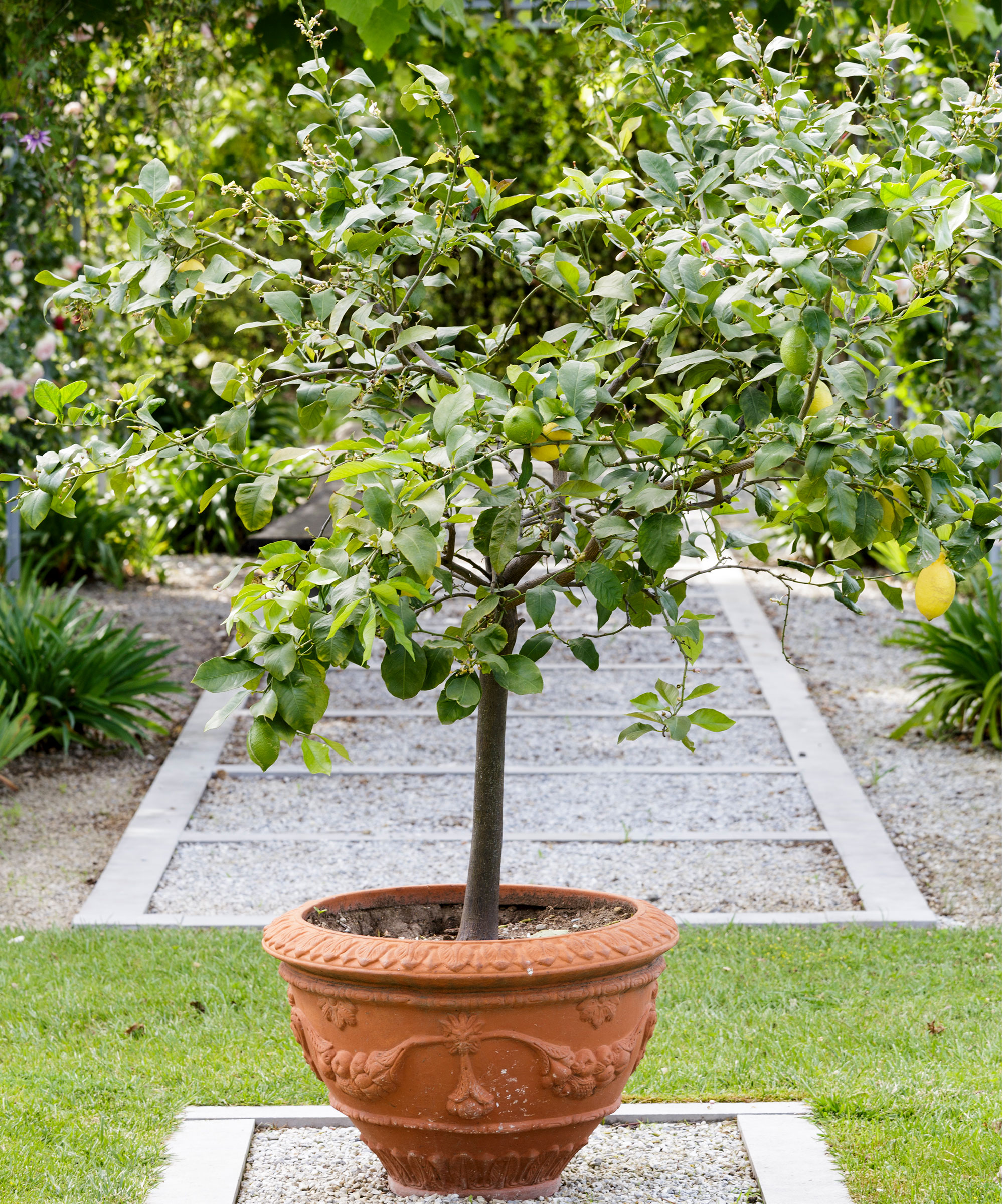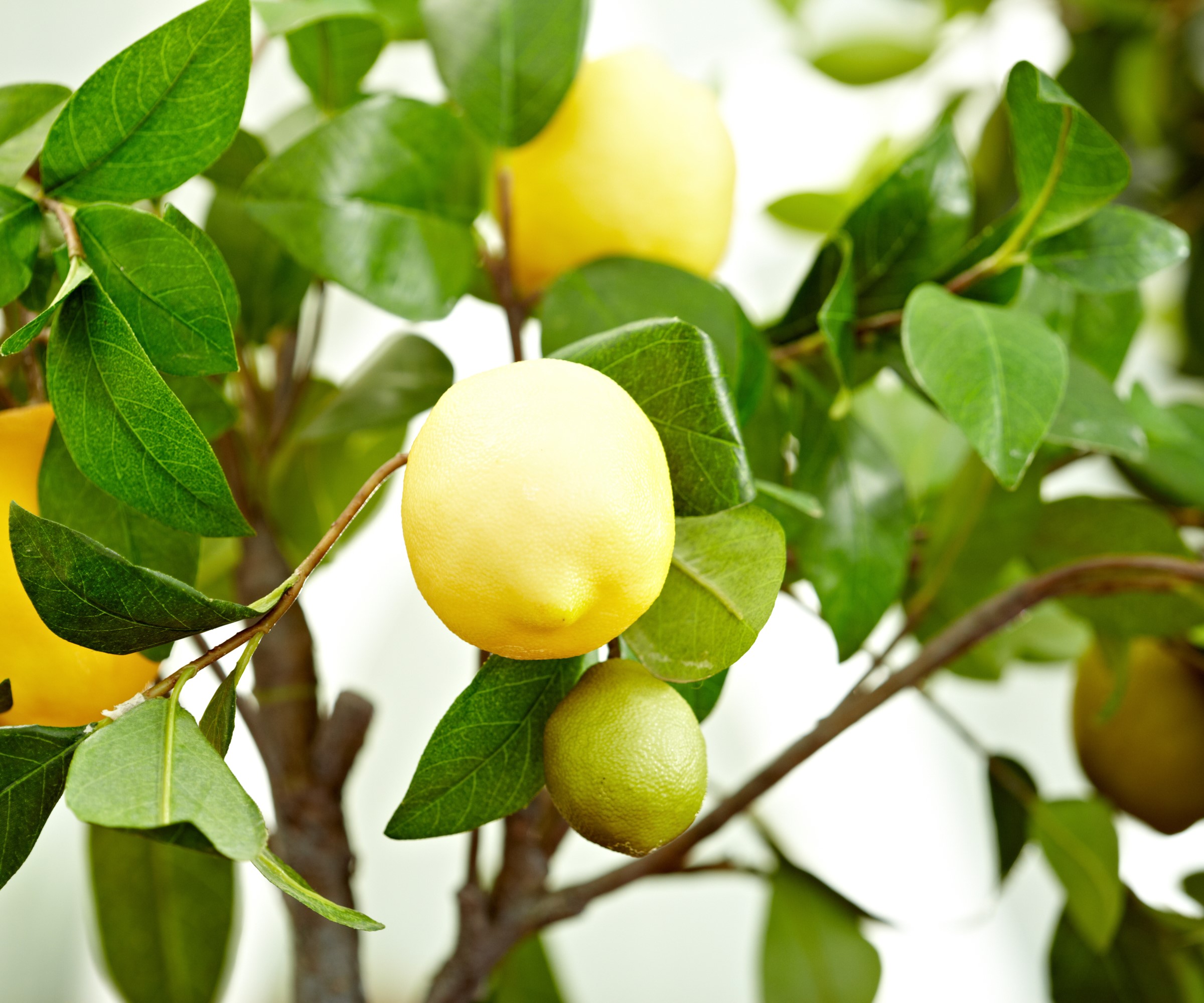When and how to prune a lemon tree – expert tips to keep it in shape and maximize citrus fruit production
Learn how to prune a lemon tree to maximize fruit production and keep the plant looking its best


It’s important to know how to prune a lemon tree if you want a healthy plant abundant with zesty fruit. Lemon trees are a popular addition to patios, and make delightful house plants in conservatories and sunny living rooms, and give a Mediterranean flavor to kitchen gardens.
A slow-growing fruit, lemons can take up to a year to go from bud to edible fruit. So patience is key – invest some time pruning your lemon tree now, and you will lay the foundation for a bountiful crop later on. Lemons are commonly pruned from late winter to early spring and do not require specialist knowledge to keep them clipped.
However, whether you have grown lemon from seed or bought it from a garden center, it’s essential that you don’t neglect it and allow it to become overgrown and unproductive. Here is everything you need to know about how to prune a lemon tree.

How to prune a lemon tree – a step by step guide
Lemon trees should be pruned from their second year onwards, otherwise they can become very leggy, overcrowded with branches, and out of shape. If you're not sure when to prune a lemon tree, the best time is typically from late winter to early spring.
First, make sure you have the right tools for the job. ‘The most important part of pruning a lemon tree is to use very sharp pruners that have been disinfected with rubbing alcohol beforehand,’ says Joseph Marini, principal of At Home with Joseph.
'Cuts that cause tears can introduce disease or stress, and pruners that have been previously used on diseased plants can cause cross contamination to your lemon tree.’ So make sure you have cleaned your pruning shears before you get to work.
However, for branches you may need a more substantial tool. 'Typically your lemon tree will be better served with a clean, sharp hand-saw or pole-saw (for higher branches), which will make much more precise, and neat incisions,’ advises Andrew Gaumond horticulturist, botanist, and director of content at Petal Republic.
Design expertise in your inbox – from inspiring decorating ideas and beautiful celebrity homes to practical gardening advice and shopping round-ups.
This HOSKO manual pole saw from Amazon can be extended up to 10ft in length, meaning it should be easy to rise higher branches for pruning them.

- ‘To start with, remove suckers or basal shoots at the base of the lemon tree,’ says Jospeh Marini. Suckers are very fast growing and often their leaves look different from the grafted part of the tree. If you don’t remove them flush at the base, they will steal water and nutrients from the rest of the tree, so do this as soon as you notice them.
- Next, remove any dead, diseased or damaged branches. ‘Any growth that appears discolored, diseased or has been invaded by any pesky insects (such as scale or mealy bugs) should be removed immediately as and when they appear throughout the year,’ adds Joseph.
- Thin out branch structures. ‘Over time lemon tree branches will often start to compete with one another for light and nutrient sources,’ says Andrew Gaumond. ‘Thin out overlapping branches, and the overall structure of the tree so it has sufficient aeration and access to light. More mature branches shouldn't be cut flush to the trunk or parent branch – instead, leave at least 5 inches of branch in place, which will better enable the tree to recover from the shock of pruning.’
- ‘Where there are double shoots that run almost parallel upwards, cut off the inside shoot,’ advises Sigrid Hansen-Catania, author of Success with Citrus Fruit, available from Amazon.
- Sigrid Hansen-Catania also recommends removing shoots that grow horizontally into the crown (cross shoots), making it denser, as well as any weak shoots that hang downwards – these should be cut off at the base.
- When pruning a lemon tree, it’s important to think about the shape. ‘A citrus plant is particularly attractive with a shaped crown, and the round crown is characteristic. ‘To do this, target the left side and cut off selected shoots,’ says Hansen-Catania. ‘Do not take any notice of flowers or fruits. The point where you cut should always lie above a leaf.’
- Finally, be careful not to cut off too much by following the one third pruning rule. ‘Never prune more than a third of a tree in one year,’ says Jospeh Marini.
Pruning potted lemon trees

If you're growing trees in pots, your potted lemon trees should be pruned in exactly the same way as other lemon trees, but you should be conscious of keeping them to a manageable size.
'Although you can prune the branches to achieve the needed size of the lemon tree, it’s not enough. Lemon trees can grow up to 20-25 feet, but you don’t want them to do that inside your house,’ says experienced botanist Ronnie Collins, who also founded Electro Garden Tools.
‘Make sure to stop providing the plant with larger pots as soon as it reaches four feet tall. It’s an optimal size for fruiting in a pot. A pot of the right size will prevent the plant from growing larger.’
Hard pruning citrus trees

Occasionally lemon trees need a hard prune to rejuvenate them. ‘A radical cutting back is the last-ditch means of healing a citrus plant,' says Sigrid Hansen-Catania.
'A lemon tree, for example, that has been overwintered in a room that was not sufficiently bright and too warm will react to these unfavourable conditions with increased loss of leaves. Cutting back will then be the only way to renew the plant and help it to grow healthy shoots.
'Cut the plant back by about half and at the same time try to bring the crown into shape. The best time to do this is in the spring, before a new growth spurt begins.'
When to prune a lemon tree

The best time to prune citrus trees, including lemon trees, is when they are starting to grow, in late winter or early spring. The pruning window is between the coldest period of the year and when the stems are shooting.
Martyn Cox, a fruit and vegetable growing expert, explains what one of the prime reasons is for clipping your lemon trees. He says: ‘Plants won't need much pruning, but you can cut back side shoots to maintain an attractive, rounded shape. Do this between late winter and early spring.’
Citrus trees will enter their period of dormancy at the end of the growing season and this is the earliest you can consider pruning them. You can prune lemon trees all the way through to early spring, when they are starting to grow.
In spring you prune to maintain the neat shape you are aiming for. As well as keeping them looking neat, the tree will respond to the pruning by producing more flower buds, which in turn can reward you with more fruit.
Prior to doing any pruning, make sure to clean and sharpen pruning shears as blunt blades can leave your lemon trees at risk of infection. Cleaning garden tools, including pruning shears, can be a quick and simple job and will make pruning easier and safer for your plants. An ideal pair of pruning shears for pruning lemon trees is the Felco Ergonomic Hand Pruner available on Amazon.

Martyn Cox has written about gardening for many popular publications in the UK, including Amateur Gardening, Gardeners World, Garden News, and the Mail on Sunday. He has written ten books on gardening, including The Veg Grower’s Almanac, available on Amazon, and How to Grow Plants in Pots for the Royal Horticultural Society,
FAQs
Can you over prune a lemon tree?
It is possible to over prune a lemon tree, which will impact its fruit production, and potentially kill it. Don’t cut it back by more than a third unless you are attempting to renovate a failing plant, in which case you can cut it back by up to half its current size.
How do you prune a Meyer lemon tree?
A Meyer lemon tree is a hybrid variety from China that is a cross between a lemon and a mandarin. It produces smaller, smoother, sweeter fruit with a thinner skin and is a great variety for growing a lemon tree indoors or in pots. You can prune Meyer lemon trees in the same way as other varieties.
Should I cut the thorns off a lemon tree?
Many lemon varieties are bred not to have thorns, especially grafted varieties, so check to see whether the thorny branch is in fact a sucker. This will be growing from the rootstock below the graft. If so, remove it.If you have a thornier lemon tree variety, you can remove the odd inconveniently located thorn without risk of harming the plant. However, there is no benefit to removing all of them, and you may cause damage to the plant by doing so.
Can you top a lemon tree?
You should not cut the top off a lemon tree and expect it to survive. If the plant requires a hard prune to renovate it, you should cut the branches by no more than half.
Pruning a lemon tree is key if you want it to remain healthy and producing fruit. Allowing it to become overgrown can impact on the quantity and quality of fruit, so spend the time looking after it if you want to see the best results with this fruit tree.

Melanie has worked in homes and gardens media for two decades. Having previously served as Editor on Period Living magazine, and worked on Homes & Gardens, Gardening Etc, Real Homes, and Homebuilding & Renovating, she is now focusing on her passion for gardening as a Senior Editor at Gardening Know How. As a keen home grower, Melanie has experimented with pretty much every type of vegetable at some point – with mixed results. Often it is the simplest things that elude you, which may explain why she just can't seem to master zucchinis.